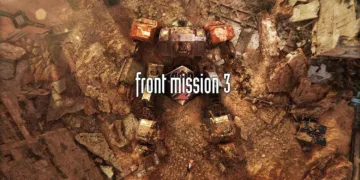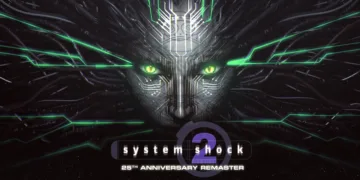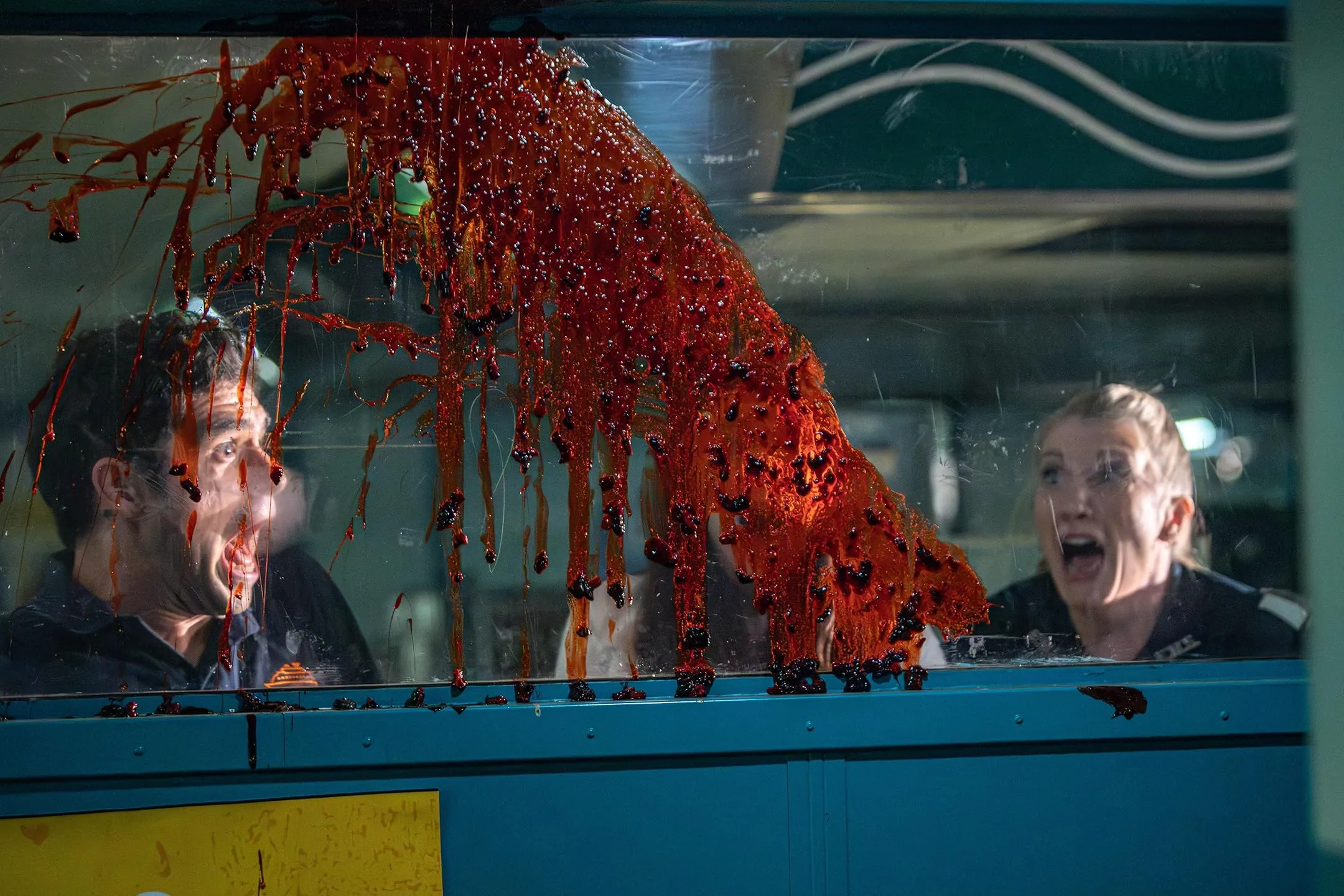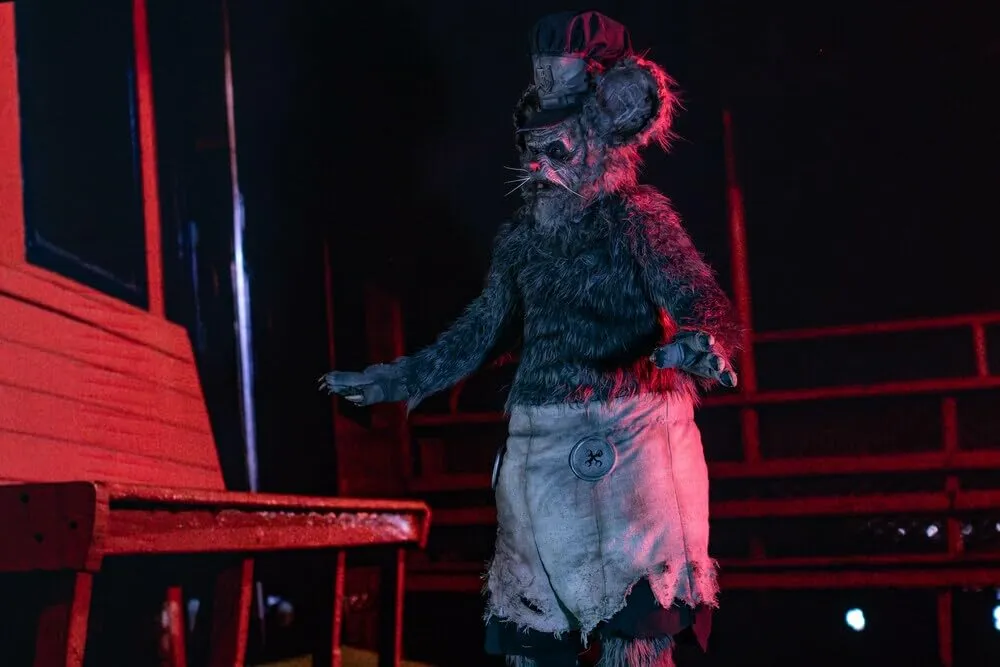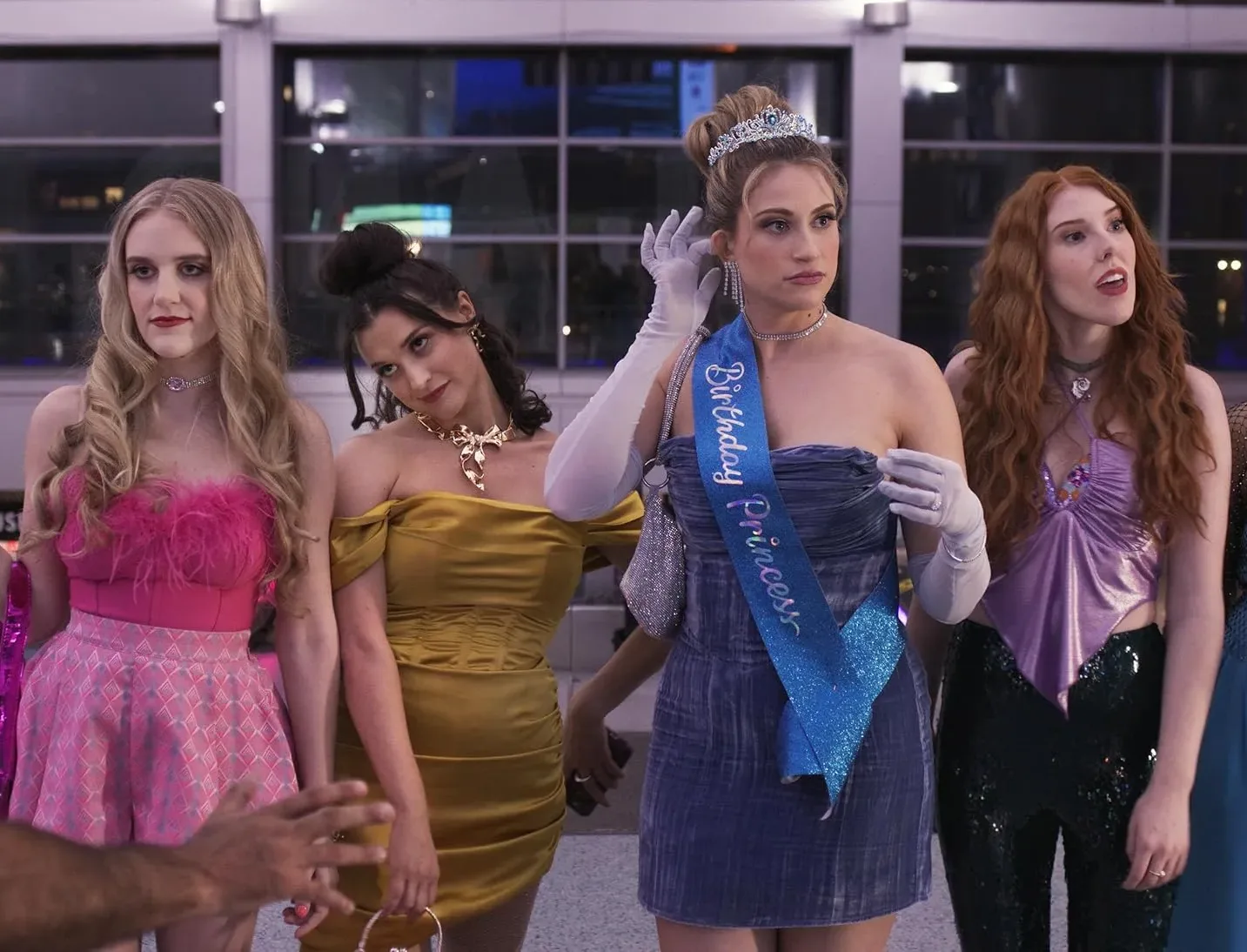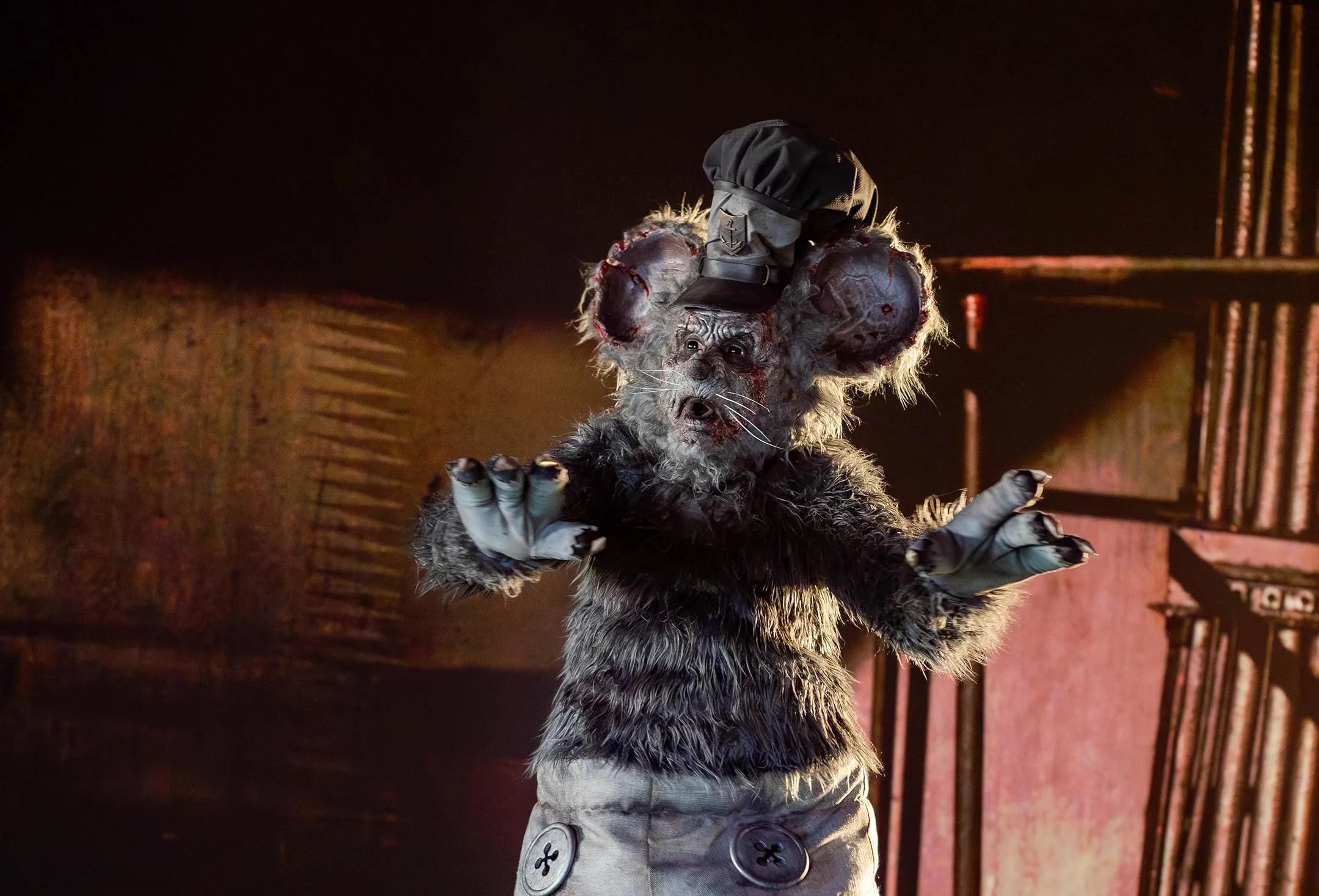Screamboat reimagines a well-known animated figure into a creature of terror, turning a source of childhood smiles into a symbol of unexpected dread. The film follows a diminutive, altered character whose existence takes a dark twist following mysterious experiments.
This reworked persona is unleashed on a decommissioned Staten Island Ferry, a setting that lends a rough, almost industrial quality to the unfolding drama. The confined, weathered deck of the vessel becomes a stage for sudden chaos, where each shadow hides the threat of mayhem.
The narrative introduces us to a world where horror collides with off-kilter humor. The film’s tone strikes a balance between unsettling violence and moments of absurd wit, presenting a series of scenes that are as shocking as they are oddly entertaining.
A well-known icon is reinterpreted with an edge that surprises and provokes thought, turning familiar elements into cues for both fear and amusement. With its recent debut, Screamboat invites viewers to witness a fresh take on storytelling—one that mixes daring character reinvention with a setting that amplifies every twist.
The film offers a curious experience that reflects current shifts in cinema, where old symbols are reborn under unexpected lights.
The Unconventional Plot and Storytelling Approach
The film opens with a startling moment: a small, aggressive creature breaks free from a long-forgotten prison on a weathered ferry. The initial spark of chaos is set off by the sudden opening of an old hatch, a moment that sends shockwaves through the confined corridors of the ship. This early incident sets the tone for what follows—a cascade of events marked by unpredictability and raw, unfiltered terror.
As the story unfolds on the aging vessel, we witness a series of events that quickly spiral into mayhem. The creature’s relentless rampage forces the passengers into a desperate struggle for survival, while hints of its obscure origins slowly come to light.
The narrative introduces brief animated sequences that offer glimpses into the creature’s past, adding unexpected layers to its character. These moments serve as a counterpoint to the live-action terror, providing brief pauses from the intense action while enriching the backstory in a striking manner.
The film’s pace starts off measured, allowing tension to build steadily during the initial hours. This measured beginning gives way to a more chaotic sequence of events in the later stages, where the rhythm becomes erratic, matching the unpredictability of the carnage on deck. Sudden, shocking scenes paired with instances of dark humor keep the audience alert, as each new twist challenges conventional expectations.
Throughout the narrative, there are strategic moments of flashbacks and brief animated cuts that offer unexpected insights into the unfolding events. Occasional moments of direct acknowledgment of the audience’s presence add a playful twist, keeping the tone refreshingly aware of its own peculiar nature.
The interaction between tightly drawn character moments and the broader slasher events on the ferry creates a narrative that is as perplexing as it is engaging, leaving viewers to question what is real and what is an artful nod to the heritage of familiar icons.
Examining the Cast and Performances
Willie emerges as a striking presence despite his diminutive size. Portrayed with a mix of physical antics and an unsettling ferocity, the character shifts from an almost comical rodent to a figure capable of instilling real fear. His actions on screen combine a sharp energy with an odd humor, making every appearance memorable and unpredictable.
Selena is a standout, portrayed as both creative and determined amid the mounting chaos. Her character faces overwhelming challenges, reacting with resourcefulness and a palpable inner strength. Watching her navigate a situation that defies logic is both gripping and relatable, as she brings a human touch to the relentless madness unfolding on the ferry.
The ensemble of supporting characters, including the dedicated crew and a group of eccentric passengers, fills the screen with vivid personalities. Their portrayals carry a sense of theatrical exaggeration, adding layers of comic relief while maintaining the overall intensity of the film. Each role, from the anxious bystander to the quirky misfit, contributes to an environment where humor and horror intermingle in unexpected ways.
Several scenes capture moments of physical performance that balance jarring violence with bursts of humor. The interactions between characters produce exchanges that are as unsettling as they are entertaining, highlighting a clear effort to mix styles and tones.
The makeup and costuming further enhance this effect; they draw on familiar visual cues from classic animation while adopting a raw, more uncompromising look that suits the film’s daring approach.
Visual Style and Cinematography
The film makes a daring choice of setting on a decommissioned Staten Island Ferry. The confined decks and weathered interiors create a suffocating atmosphere, infused with a palpable sense of foreboding.
The gritty, industrial feel of the ship is paired with hints of an almost cartoon-like quality—a surprising mix that catches the eye and unsettles the viewer.
Camera work stands out with inventive angles and carefully arranged contrasts during moments of high tension. Certain scenes capture the interplay of light and shadow in a way that casts the vessel in a stark, eerie glow. Yet there are sequences where camera movement feels unsteady and lighting is less effective, causing some disruption to the visual rhythm.
The film pairs digital effects with practical on-location shots, resulting in a striking if uneven visual experience. Some green-screen segments clash with the organic textures of the real ship, creating jarring contrasts that add an unexpected twist to the aesthetic. These irregularities contribute to a look that is both unpredictable and distinct.
Set design plays a significant role here. Detailed textures on the ship’s interiors evoke a mood of decay and latent danger. Several set pieces serve as dramatic backdrops during intense action, particularly in scenes marked by chaotic sequences. The color palette—characterized by murky, subdued tones—reinforces a mood that is haunting and fitting for the film’s bold reinterpretation of familiar icons.
Special Effects, Gore, and Practicality
The film surprises with a series of imaginative kill scenes that mix shock and inventive displays of gore. We see moments where unconventional tools—a harpoon, a wire used for decapitations—are used in ways that challenge expectations.
There are scenes where the violence feels like a nod to absurdity, offering shocks that catch the viewer off guard while provoking a mix of horror and humor.
Practical effects come through in several scenes, adding a tangible feel to the carnage that digital enhancements struggle to match. In particular, the close-up sequences featuring meticulously staged stunts capture the raw impact of each kill, reminding me of the hands-on techniques favored by directors I admire from French New Wave traditions. Yet, there are moments when digital touches feel out of place, interrupting the tactile quality of the work.
Stunt work is arranged with clear attention to detail. The physical movements and timing behind the kill scenes are choreographed in a way that, despite occasional excesses, keeps the action both surprising and visually engaging. The editing plays a vital role, sharpening the effect of sudden violence while occasionally using deliberate missteps to enhance the dark humor.
Sound design adds another dimension here, with well-timed auditory cues complementing the visual brutality. Familiar tunes and distinctive whistled passages create an atmosphere that contrasts sharply with the on-screen mayhem, offering a curious harmony between eerie calm and unexpected violence.
Hardcore slasher fans will find a mix of inventive physical effects and surreal, over-the-top displays that deliver memorable, if occasionally erratic, moments of terror.
Themes, Tone, and Parody Elements
Screamboat reinterprets a well-known animated character by transforming him into a figure of terror, serving as a striking comment on how cultural icons change over time. This film turns familiar childhood memories into scenes of shocking violence, mixing startling brutality with unexpected humor.
The approach invites viewers to question what happens when cherished symbols are repurposed for shock value, reflecting current shifts in how society views classic material.
The movie balances frightening scenes with playful moments. It uses gory sequences alongside cheeky references that make the horror feel aware of its own absurdity. Catchy melodies and recognizable visual hints contribute to a tone that is both unsettling and wry. This mix creates a curious atmosphere that keeps the audience on their toes, ready for the next surprise.
Screamboat also offers a pointed look at the exploitation of works that are free for anyone to use. It raises issues of commercial pressure and the transformation of revered characters into something unrecognizable.
This criticism is woven into the film through visual cues and dialogue that remind us of the tension between preserving legacy and embracing radical reinvention.
The film touches on ideas about the hidden nature of icons by turning a symbol of innocence into a creature of terror. Recurring images and costume choices reinforce this shift, layering the narrative with hints of deeper meaning amid the chaotic scenes. These symbols invite viewers to consider what lies beneath familiar faces in a rapidly changing cultural landscape.
Production and Direction
Steven LaMorte’s approach reflects his roots in low-budget horror, infusing the film with a raw and unpolished energy that sets its tone. His direction balances respectful nods to classic horror with moments of playful satire, creating a style that is both earnest and irreverent.
The filmmaker mixes homages to cult favorites with wry commentary, resulting in scenes that simultaneously honor tradition and twist expectations.
The script provides witty banter and tongue-in-cheek dialogue alongside sparks of unexpected feeling. Cultural quips and familiar references pepper the conversations, giving the narrative a voice that is light yet thought-provoking. Some exchanges hit with sharp precision, while others occasionally feel forced, a reminder of the challenges inherent in merging camp with genuine sentiment.
Choosing a decommissioned Staten Island Ferry as the primary location injects a sense of authenticity into the project. The limited budget becomes an asset here, with creative production design making the most of the ship’s weathered surfaces and confined spaces. This practical decision enhances the film’s tactile quality and supports its distinct atmosphere.
Editing plays a crucial role in shifting the mood between suspenseful horror and moments of dark humor. Timing in the cuts adds impact to both shocking reveals and humorous interludes.
Meanwhile, the orchestral score, paired with select public domain tunes, supplies an eerie yet playful backdrop that complements the visuals without overpowering them. Each of these elements works in tandem to produce a film that challenges expectations while retaining a clear sense of purpose in its creative vision.
The Review
Screamboat
Screamboat is a bold low-budget experiment that transforms a beloved icon into a figure of terror and irony. It offers inventive practical effects, quirky humor, and uneven pacing that challenge expectations while delivering memorable moments for fans of offbeat horror.
PROS
- Bold reinterpretation of a cultural icon
- Inventive practical effects and creative kill scenes
CONS
- Uneven pacing at times
- Technical inconsistencies in lighting and CGI
































